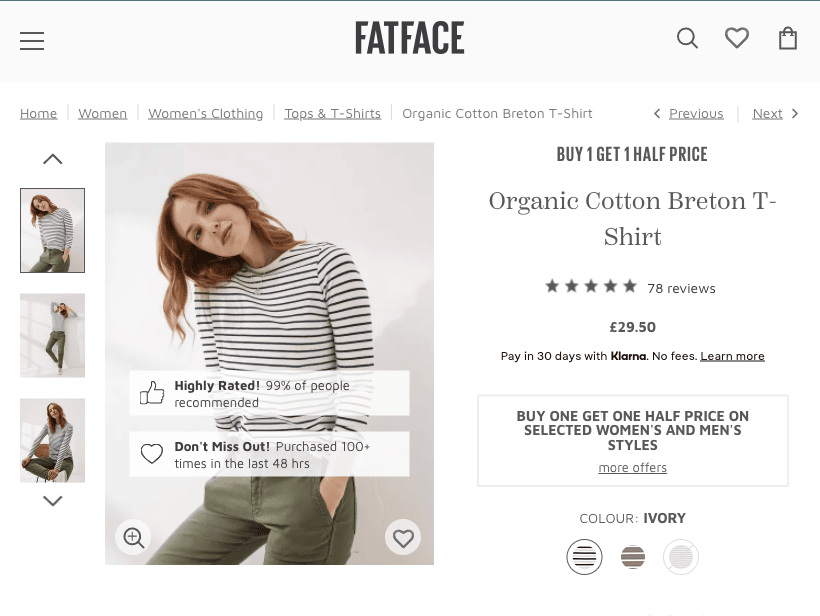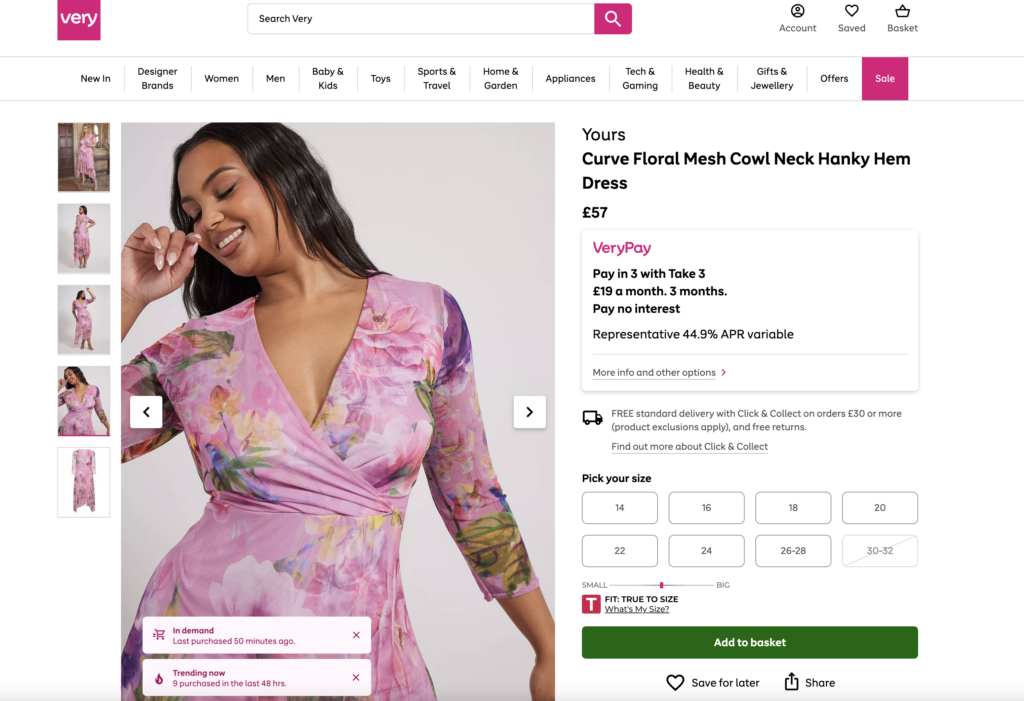There’s a seismic mind shift by brands and retailers when it comes to dealing with the increasing burden of returns, which is highlighted even further with environmental spotlights such as June’s World Environment Day. Once accepted as a necessary evil of eCommerce, retailers are now more conscious than ever of the negative impact of returns and are looking for solutions to reduce both the financial and environmental costs, especially in sectors such as apparel and fashion eCommerce, where online return rates are particularly high.
But why the shift, and how can implementing a social proof messaging strategy help drive conversion rates and reverse the upward trend in eCommerce return rates?
Environmental and financial impact of fashion returns
The shift in sentiment around returns is two-fold. It’s fuelled by a greater awareness of the environmental impact of returns for fashion retailers and consumers, the former having sustainability targets to hit in their move to net zero and the latter developing more of an environmental conscience as a result of their increased knowledge of the implication of their online returns.
The cost of returns in online fashion
And, for retailers at least, it’s also coupled with the sheer price of dealing with returns, which can hit already tight eCommerce profit margins hard. UK online returns reached £27 billion in 2024, with costs ranging from £10 to £20 an item once factors such as postage, packaging, depreciation, labour and missed sales opportunities are taken into account. That’s cash that online retailers can’t afford to lose.
The sheer scale of the challenge of returns is particularly evident in fashion eCommerce, where the need for customers to be able to check that something fits or suits means higher returns than in other product sectors. Fashion eCommerce has a return rate of around 30% in the UK, although for some retailers, it can be as much as half of products sold.
This is coupled with a sector where fast fashion is still dominant – and that can lead to waste simply because disposing of online fashion returns items can be cheaper than trying to resell them if they are of low value or have missed their peak sales period.
In 2023, a report from the British Fashion Council found that 23 million returned garments were sent to landfill or incinerated in the previous year, representing 75% of the approximate 3% of all returns that can’t be resold. The statistics were a shocking revelation for consumers who previously hadn’t been aware of the scale of such practices. Today, more than ever, they expect change, and although the problem of returns is down to their indecision, they expect retailers to solve it.
Charging for online returns and promoting in-store alternatives
In fast fashion, returns are an even more significant problem simply because customers have always tended to order at greater volumes because of the lower prices. Such retailers have been working hard to reduce the burden of online fashion returns.
In 2022, retailers, including Zara and Next, introduced charges for consumers looking to return products bought online and returned online. The trend caught on quickly among other fashion eCommerce retailers as they also sought to reduce their returns rates and change consumer behaviour. A report by Which? in 2024 found that more than half (12) of the 20 biggest online fashion retailers, including Asos, River Island and Boohoo, are now charging for online fashion returns.
This strategy is designed to redirect consumers to stores, where returns remain free, and retailers can consolidate or redistribute items for sale more easily and recapture a sale. The retailer can instantly confirm that the item can be accepted for a return and authorise a refund. Retail staff can offer potential alternatives to the returned item and cross-sell other items.
Using social proof messaging to build trust and reduce returns
- Helping customers buy right the first time
Minimising the impact of online fashion returns means reducing the potential for them in the first place. That means the customer is buying right the first time. There are many different technologies and tools that retailers can implement to enable this. In fashion, for example, fit and sizing tools can help customers better assess how something will fit their body shape and size before they buy. This can help to reduce the practice of bracketing, where customers order a size above and below their normal size to see which best fits. - Helping customers purchase with confidence
In fashion, in particular, being on trend is essential, and customers react well to knowing what their peers are buying – which is where social proof messaging can help. It does this through messages presented during different stages of the sales funnel, which show what other customers are buying or browsing by highlighting popular, trending items and bestsellers. Based on the real-time, accurate data, social proof messaging harnesses the power of the crowd to help shoppers make the right buying decision. This leads to increased conversion rates and boosts customer confidence that they are making the right purchase. - Helping customers make more informed decisions
Coupled with aggregated review data, social proof messaging increases confidence further, since it gives added proof that a customer is buying correctly. In online fashion that might be a more assured fit, helping to reduce bracketing. Similarly, attribute messaging, which displays relevant product features such as ‘slim fit’ and links it to the behaviour of other shoppers can also help inform better purchasing decisions and reduce the likelihood of returns.

Combining ratings and social proof, is a tactic already used by fashion retailer FatFace. This combination can help to reduce returns because customers can get a clearer idea of how other customers have rated the fit of that particular garment. For example, it might show a message that says “Top Pick! 98% of people rated 5 star”. Integrating product reviews within social proof messaging can also help customers assess the quality of a garment which can also increase confidence to buy and reduce the likelihood of returns.
Future-proofing online returns with social proof
The returns challenge won’t go away, especially in a sector such as online fashion retail, where consumers are naturally less decisive. Retailers and brands need to offer customers the ability to change their minds on goods. However, with changing sentiments and the very real drivers of sustainability and cost, online fashion returns need to be handled better. One of the best ways of doing that is by reducing their likelihood in the first place by ensuring the customer buys right first time. And that’s where social proof messaging can help.
Brands and retailers like Very.co.uk, Michael Kors, Debenhams and M&S leverage social proof messaging to help shoppers make better and more informed purchase decisions by aggregating behavioral data and displaying customizable messages to highlight best selling, trending and popular products. These social proof messages lead to higher conversion rates, increased sales and can help reduce return rates.




